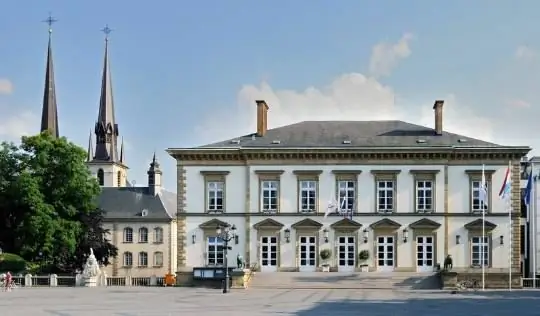
Description of the attraction
In the very heart of Luxembourg, on the Guillaume II square, there is one of its main architectural attractions - the two-storey building of the Luxembourg City Hall, the City Hall. It is a fine example of neoclassical architecture and an important historical monument.
At the beginning of the 19th century, on the site where the Luxembourg City Hall stands today, there was a Franciscan monastery. The city hall until 1795 was housed in a building known today as the Palace of the Grand Duke (however, since its construction in 1572, the building has significantly changed). After Luxembourg was occupied by the French, the administration of the Foret department was located in the old town hall, and the city hall for more than thirty years did not have its own building and was forced to move from place to place.
In the 1820s, it was decided to build a new City Hall on the site of a long-fallen Franciscan monastery. In 1828, the project was finally agreed, and the following year the old monastery was demolished. Construction of the new Town Hall began in 1830.
The Belgian conflict that flared up in the same year, as a result of which the independent kingdom of Belgium arose, and Luxembourg lost part of its territories, in fact, did not affect the construction in any way, since the city itself remained part of the German Confederation and was under the protection of the German garrison and outside the control of the rebel forces … In October 1838, the first meeting of the city council took place in the new Town Hall. The official grand opening in the presence of the King of the Netherlands and the Grand Duke of Luxembourg Willem II took place only in July 1844. In 1848, the Constituent Assembly of Luxembourg was held at the Town Hall, at which a new national constitution was signed.
In 1938, two bronze lions, the work of the talented Luxembourgian sculptor Auguste Tremont, appeared near the entrance to the Town Hall.






